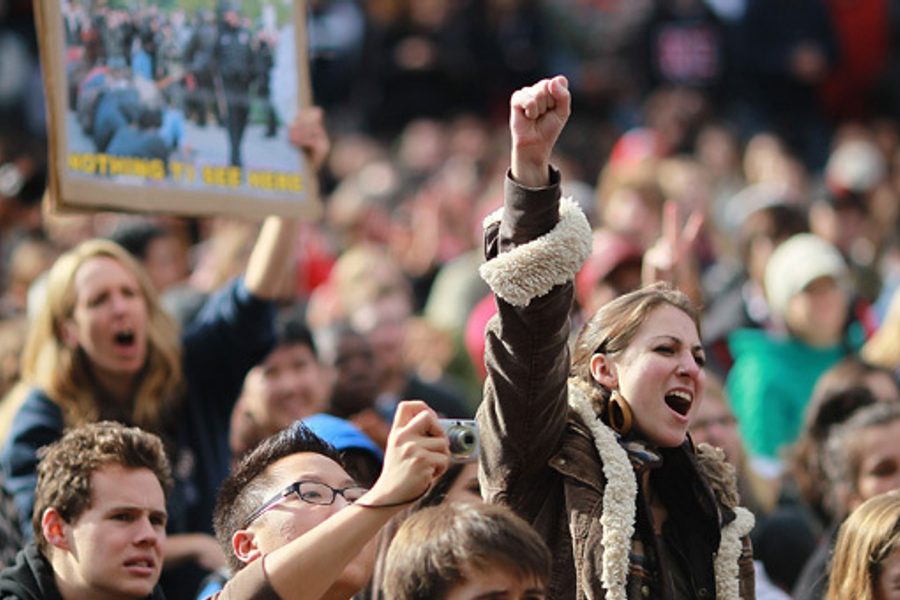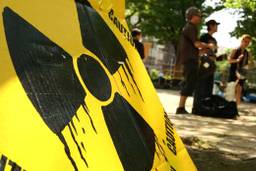UC Davis Releases Report on Student Pepper Spraying, but Removes Campus Cops’ Names
Lindsey Kratochwill

The University of California at Davis today released its report of the now-infamous pepper-spraying of student demonstrators by campus police last fall.
According to the so-called Reynoso report, made available this afternoon on the university’s website, “the pepper spraying incident that took place on November 18, 2011 should and could have been prevented.”
The report, conducted by a task force chaired by former California Supreme Court Associate Justice Cruz Reynoso was made available on the this afternoon, accompanying an earlier report completed in late February by Kroll Inc., a risk management firm.
The protest, which took place at UC Davis on Nov. 18, became a viral sensation, with images and videos of police pepper spraying passive protesters as they sat on the ground. Eleven were treated for the effects of pepper spray, and 10 people were arrested, nine of whom were students. UC Davis students, inspired by the Occupy movement, were staging protests against tuition hikes.
On Nov. 21, Chancellor Linda Katehi announced a task force that would investigate “events surrounding the arrests, including communications from the police to the administration.” Though the administration initially set a deadline of 30 days, this turned into months, and when the report was finally scheduled to be released on March 6, it hit a roadblock.
Attorneys for the Federated University Police Officers Assocation (FUPOA), which represents the campus police at UC Davis, filed a lawsuit to block the distribution of the report, citing laws that protect the confidentiality of peace officers’ personnel records. The court issued a temporary restraining order, delaying the release of the report.
“I very much regret the delay in getting this report to you,” said Reynoso in a public meeting held to discuss the report this evening. “The best interest of the community would have been to have the report to you the earliest as possible.”
In the public meeting, held at UC Davis and streamed online, Reynoso said that he does not particularly blame the lawyers or people who brought on the lawsuit, but rather blames the California legislation, commonly known as the Police Officer’s Bill of Rights.
On Tuesday, the University of California and the FUPOA reached an agreement, and an Oakland court lifted the stay, allowing for the release of the report.
As a result of this agreement, the names of the police officers involved in the incident are excised from the report. Though the media already knows all too well the identities of Lt. John Pike and Police Chief Annette Spicuzza, about 10 other officers are identified only with names such as Officer P or Officer O. FUPOA argued in court that releasing such names to the public could result in compromising their safety. According to Pike’s attorney, the officer — who was seen on the viral video pepper spraying students indiscriminately—has received in excess of 10,000 harassing texts and e-mails per week.
The report found that the university’s harsh treatment of student demonstrators stemmed from a concern about their relationship to the broader Occupy movement and the potential participation of non-students in the UC Davis encampment. Both the earlier Kroll report and the Reynoso report released today have found such a concern to be unfounded:
To date, the assertion that many non-affiliates [non-students] were involved in the Occupy movement encampment on the Quad has not been substantiated. The status of the protesters arrested on Nov. 18 does not support the contention that many non-affiliates were involved in these events.
The report also chastizes the team of administrators and campus police officers who made decisions about the handling of student demonstrators for failing to investigate whether or not there were actually significant numbers of non-students present — which could have been achieved by asking to see student identification.
With this reasoning, the report concludes, “there was no immediate need to order the police to take down the tents on Friday, Nov. 18.”
The report also found that the team of administrators making decisions — referred to as the “Leadership Team,” — did not sufficiently communicate orders, leaving the decision of whether and how to remove student demonstrators largely to the interpretation of campus police.
The Leadership Team is described as operating under an informal, consensus based, decision-making process that is flexible in its configuration. As Kroll describes it, ‘The Leadership Team did not have a formal name or roster of members, met via conference call, and did not have an agreed upon method to communicate or record decisions.’ This structure failed to effectively support managing the events of November 18.


